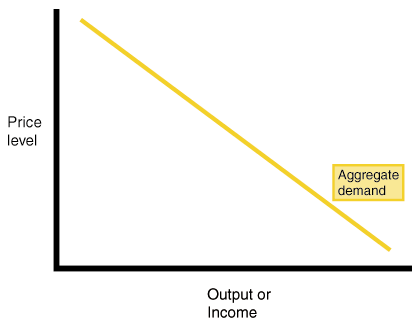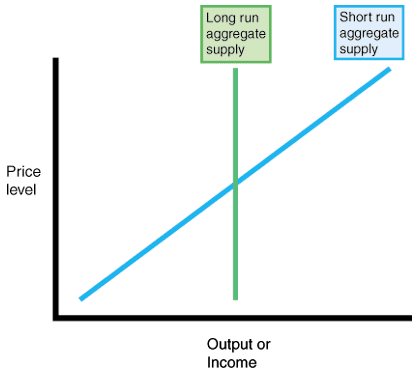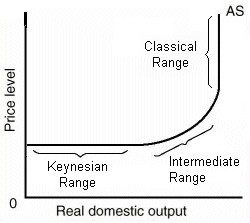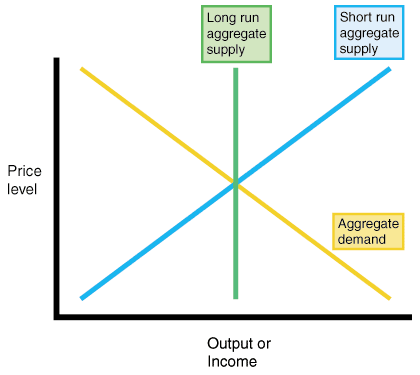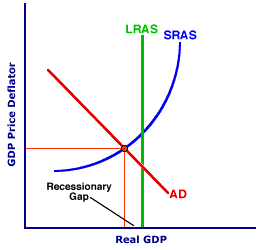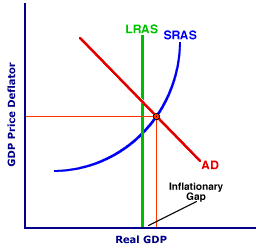Unit 7
Balance of payments
- measure of money inflows and outflows between the U.S. and the world
- Inflows are referred to as credits
- Outflows are referred to as debits
- divided into:
- Current account
- capital / financial account
- official reserve account
- every transaction in the balance of payments is recorded twice in accordance with standard accounting practice
- Ex: U.S. manufacturer, John Deere, exports $50 million worth of farm equipment to Ireland
- Credit of $50 million to current account
- Debit of $50 million to capital/financial account
- balances equal each other
- balance of trade or Xn (balance on goods and services)
- exports(inflow/credit) - imports(outflow/debit)
- Net Foreign Income
- income earned by U.S. owned foreign assets - Income paid to foreign held U.S. assets
- Ex: Interest payments on U.S. owned Brazilian bonds - Interest payments on German owned U.S. treasury bonds
- Net transfers (tend to be unilateral)
- foreign aid = a debit to the current account
- Ex: Mexican immigrant workers send money to family in Mexico
- Balance of capital ownership
- Includes purchase of real and financial assets
- Direct investment in the U.S. us a credit to the capital account
- Ex: Toyota factory in San Antonio
- Direct investment by U.S. firms/ individuals in a foreign country are debits to the capital account
- Ex: Intel factory in San Juan, Costa Rica
- Purchase of foreign financial assets represents a debit to the capital account
- Ex: Warren Buffet buys stock in Petrochina
- Purchase of domestic financial assets by foreigner's represents a credit to the capital account
- The United Arab Emirates sovereign wealth fund purchase a large stake in the NASDAQ
- Differences in rates of return on investment
- Ceteris Paribus, savings will flow toward higher return
- The current account and capital account should zero each other
- If current account has a negative balance(deficit), capital account should have a positive balance(surplus)
- foreign currency holding of U.S. Fed Reserve System
- When there is a balance of payments surplus the Fed accumulates forgeign currency and debits the balance of paymetns
- When there is a balance of payments defivit the Fed depletes its reserves of foreign currency and credits the balance of payments
- The official reserves zero out balance of payments
- additions to a nation's account
- subtractions to a nation's account
How to calculate the following:
- Balance on trade: goods and service exports - goods and service imports
- Trade deficit occurs when the balance on trade is negative (imports > exports). Trade surplus occurs when the balance on trade is positive (Exports > Imports)
- Balance on current account: Balance on trade (Exports and Imports) + Net Investment Income + Transfer payments
- Official Reserves: Change in Current Account - Change in Capital Account + Change in Official Reserves = 0
- The buying and selling of currency
- Ex: In order to purchase souvenirs in France, it is first necessary for Americans to sell (supply) their dollars and buy (demand) Euros
- The exchange rate(e) is determined in the foreign currency markets
- Ex: The current exchange rate is approx. 77 Japanese Yen to 1 U.S. dollar
- The exchange rate is the price of a currency
- Do not try to calculate the exact exchange rate
Changes in Exchange Rates
- Exchange rates(e) are a function of the supply and demand for currency
- increase in supply of currency will decrease the exchange rate of currency
- decrease in supply of currency will increase the exchange rate of currency
- increase in demand of currency will increase the exchange rate of currency
- decrease in demand of currency will decrease the exchange rate of currency
Appreciation and Depreciation
- Appreciation of currency occurs when exchange rate of that currency increases
- Depreciation of currency occurs when exchange rate of the currency decreases
Exchange rates determinates
- Consumer tastes
- Relative income
- Relative price level
- Speculation (expectation)
- Demand $- exports and capital inflows. When the U.S. exports goods/services to other countries they need our $ to complete the transaction. They demand our money. First they need to supply their.
- Supply $- imports and capital outflows. When we import goods/services from other countries, we need their money to complete the transaction. So we demand their money. We need to supply our money.
Tips
- Always change D line on one currency graph, the S line on the other currency graph
- move the lines of the two currency graphs in the same direction (right or left) and you will have the correct answer
- If D on one graph increases, S will increase on the other graph
- If D moves left, S moves left on the opposite graph
Flexible exchange rate (floating)
- Set by market forces with little or no government intervention
Fixed exchange rate
- determined by government policies
Absolute Advantage v. Comparative Advantage

